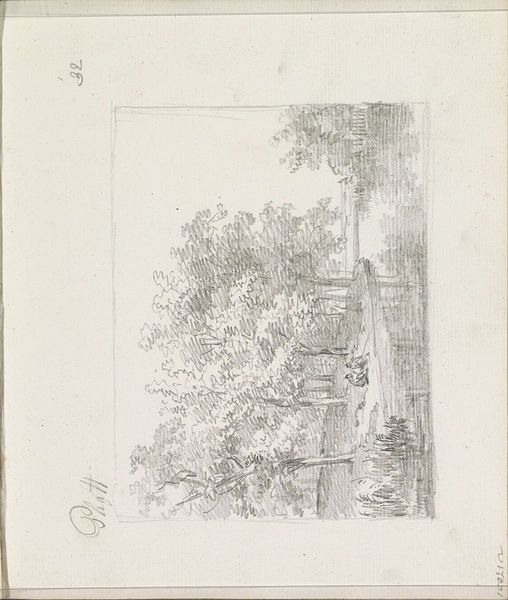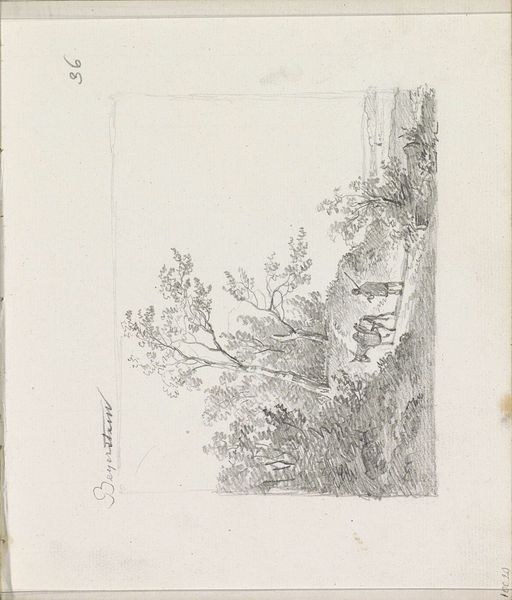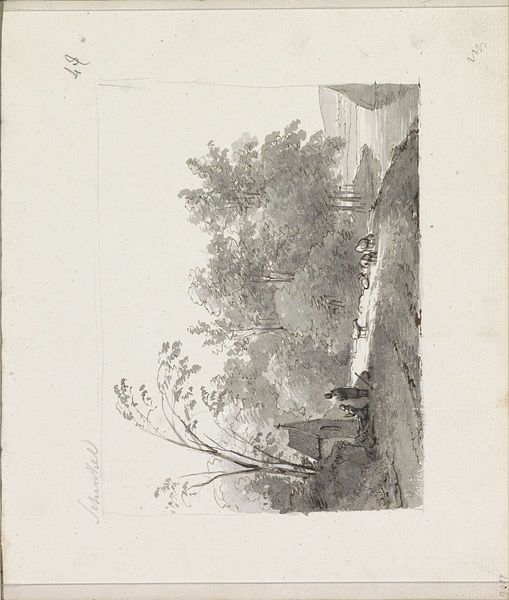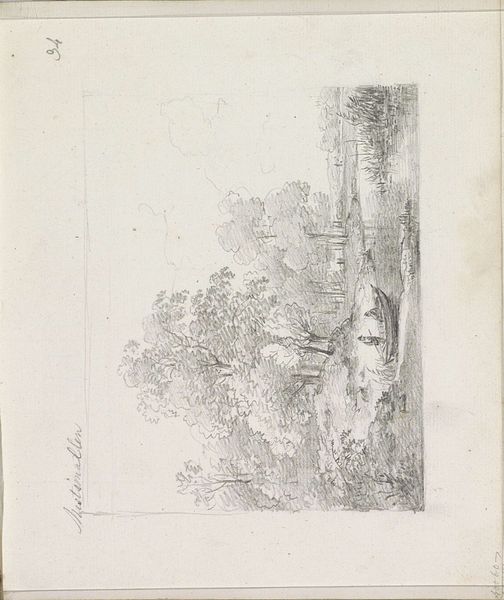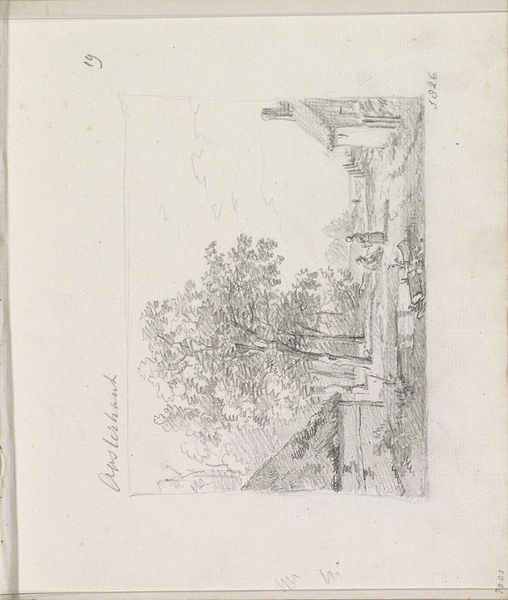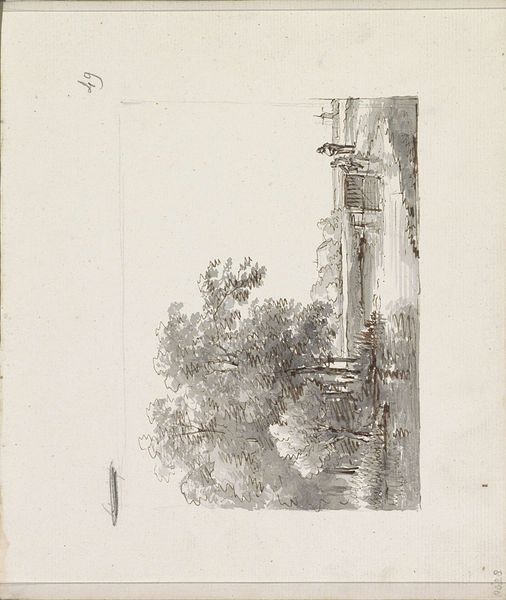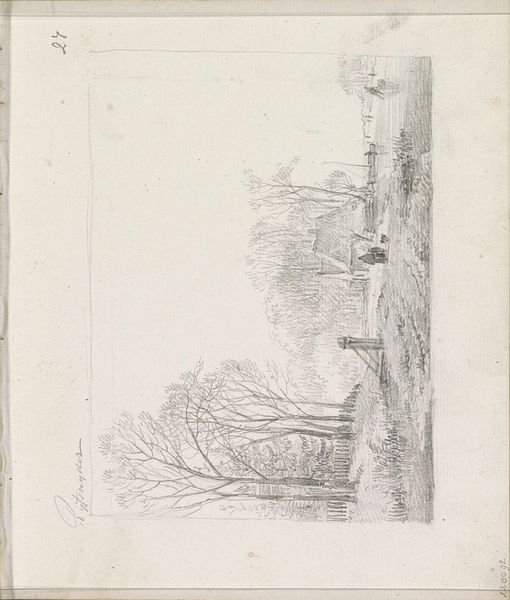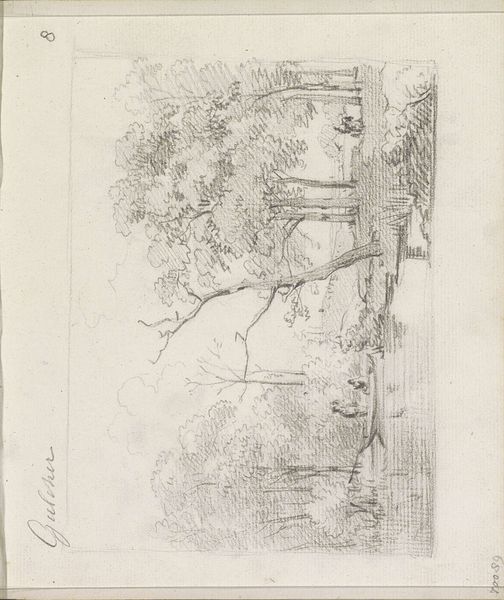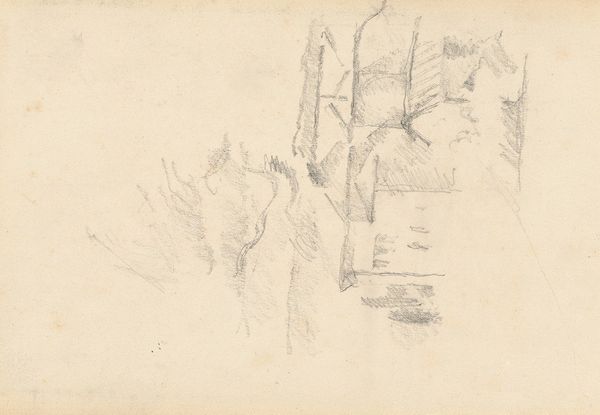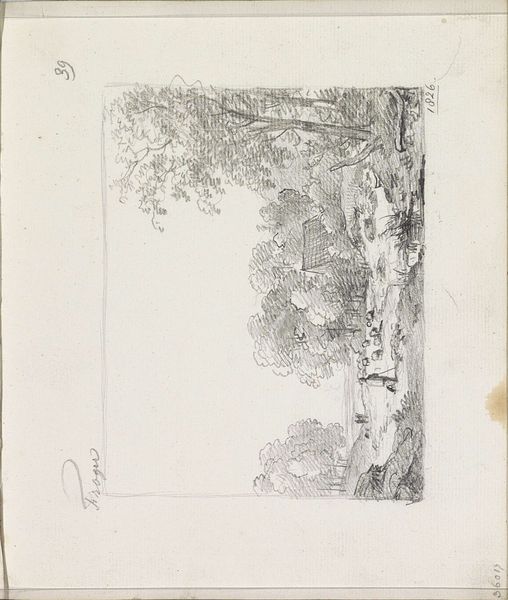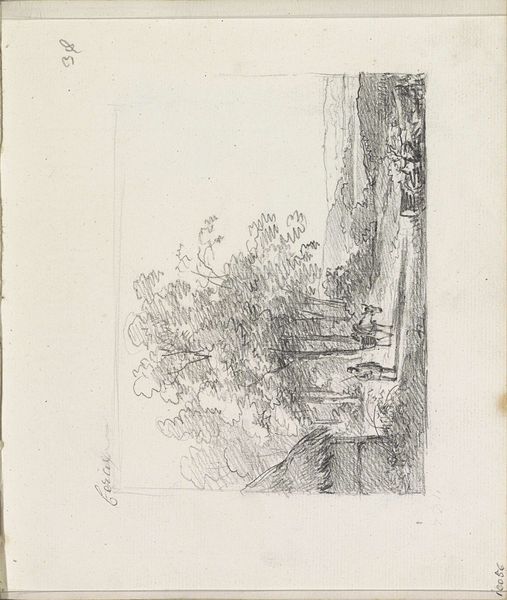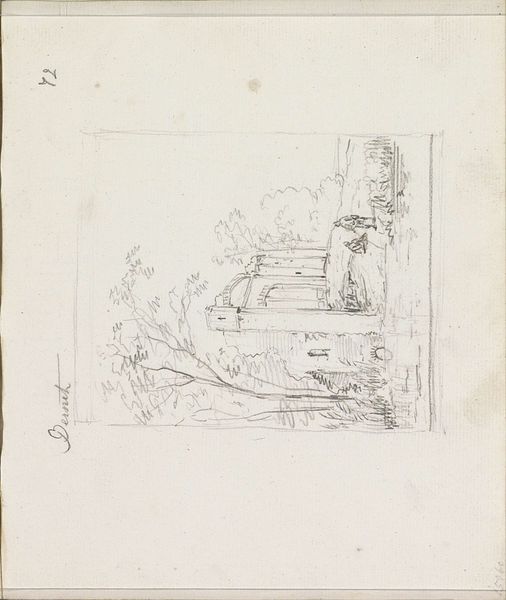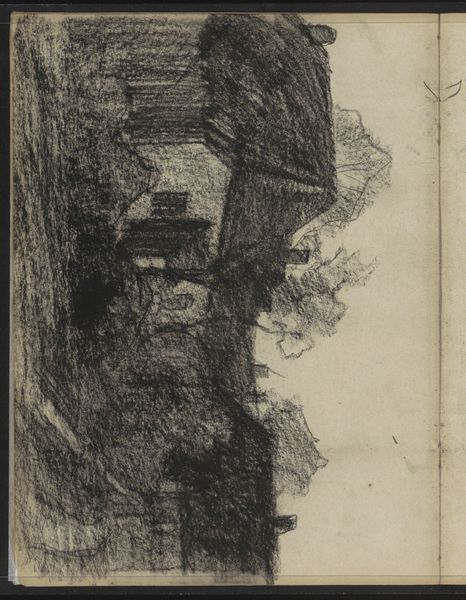
#
pencil drawn
#
amateur sketch
#
light pencil work
#
quirky sketch
#
pencil sketch
#
incomplete sketchy
#
sketchwork
#
pen-ink sketch
#
pencil work
#
initial sketch
Copyright: Rijks Museum: Open Domain
Curator: Before us we have a sketch by Andreas Schelfhout titled "Two Women on a Path by a House," created around 1825-1829. It’s currently held here at the Rijksmuseum. Editor: Oh, I love the quiet simplicity of it. It’s all gentle lines, and the overall feeling is so peaceful, almost like a memory. Curator: Indeed. Schelfhout was a master of landscape, but this particular sketch gives us insight into the everyday lives of women during that period, placed within the context of their domestic environment and its surroundings. Editor: Right. Look at the textures he's able to evoke with just pencil. You feel the roughness of the tree bark and almost hear the crunch of the path underfoot. And what about the scale? Is it smaller than I’m imagining? Curator: Yes, quite intimate in size. This allows for close study of the details—and it feels like a personal meditation rather than a grand statement about nature. How do you feel about the fact that it’s unfinished, still a sketch? Editor: Honestly, I prefer it this way! There's a sense of potential, like the scene is still breathing and developing. We’re seeing a moment captured in time, raw and vulnerable. Curator: Perhaps Schelfhout never intended to refine it. Consider the limited freedoms and constraints on women's movement during this era. Were they truly free on this path, or still tethered to their house, literally, by the scene’s composition? Editor: I guess they were just going to gossip and take a bit of air. A nice afternoon walk? I appreciate your point though and perhaps I had idealised the scene in my head! The house does anchor them there. Curator: The sketch really speaks to Schelfhout’s unique skill in capturing the spirit of a scene with very little. And to my point, it may also unintentionally reveal something else about 19th-century Dutch social dynamics, which always adds another layer of interpretation. Editor: It’s like glimpsing into someone's private sketchbook. I find it really moving. Thanks to pieces like this, art history has been able to inspire me personally. Curator: Agreed. It's a testament to art's power to make visible social conventions as well as to prompt us to question and redefine our understanding of gendered power dynamics within landscape art, while capturing life itself.
Comments
No comments
Be the first to comment and join the conversation on the ultimate creative platform.
